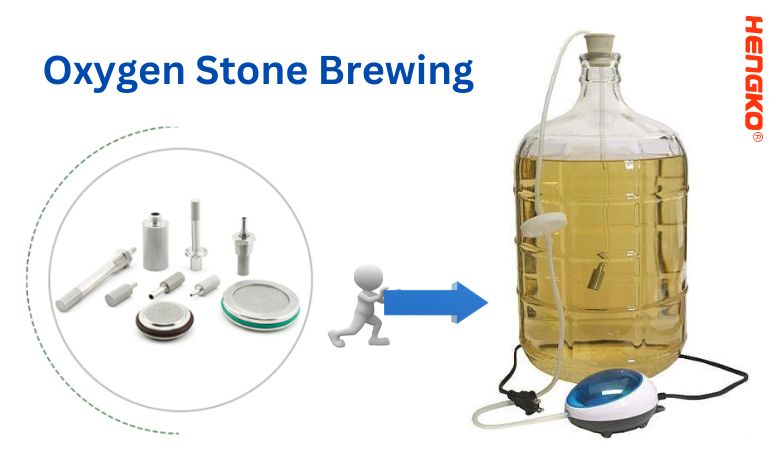-
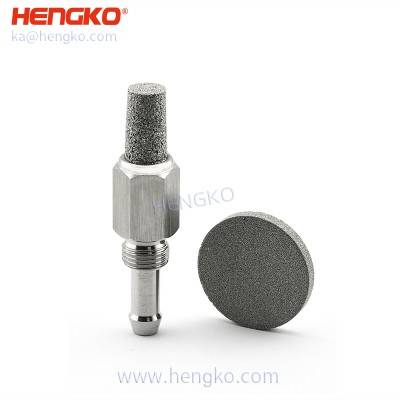
ICU mechanical air ventilator breathing respiratory machine Medical stainless steel Hig...
The ventilator filter element filters dust from the air.HENGKO's filter element of the ventilator is stainless steel 316, stainless steel 316L, which has the...
View Detail -
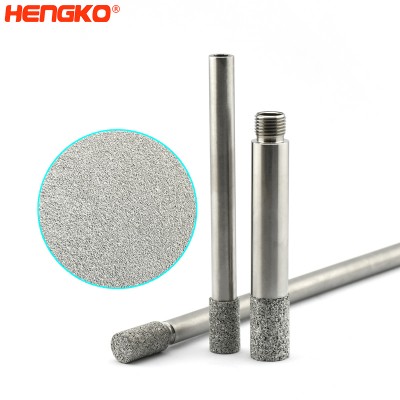
Medical Atomized oxygen Humidifier Bottle filter and Oxygen Flowmeter Humidifier
Sintered powder metal filters are ideal for applications involved in various industries including medical, food and beverage, aerospace, flame arrestors, wel...
View Detail -

HENGKO bacterial/Viral Filter with invasive ventilator oxygen gas choke filter for hosp...
The ventilator filter element filters dust from the air.HENGKO's filter element of the ventilator is stainless steel 316, stainless steel 316L, which has the...
View Detail -
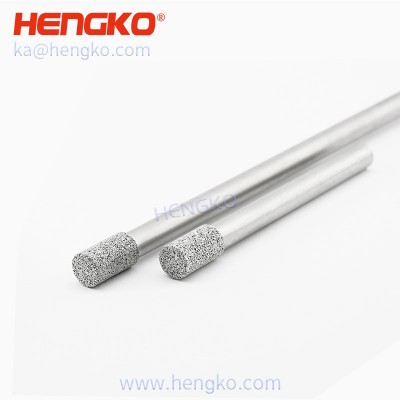
Oxygen Regulator Filter with humidifier medical equipment at hospital room
Sintered powder metal filters are ideal for applications involved in various industries including medical, food and beverage, aerospace, flame arrestors, wel...
View Detail -
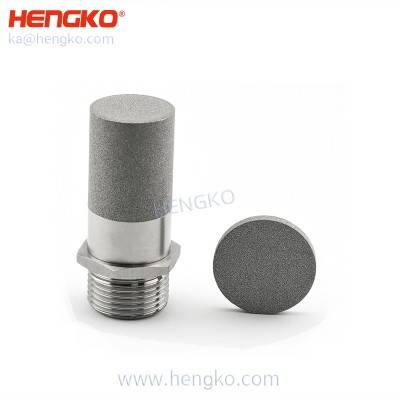
Medical Respiratory Mechanical flow neonatal Ventilation Breathing System element of in...
The ventilator filter element filters dust from the air.HENGKO's filter element of the ventilator is stainless steel 316, stainless steel 316L, which has the...
View Detail -
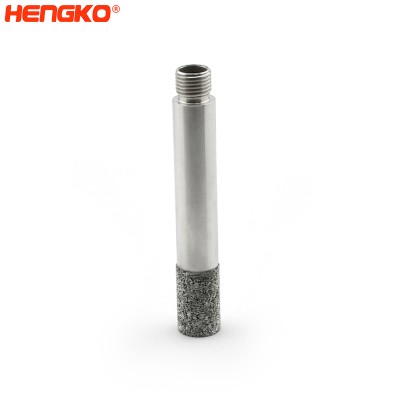
Medical Stainless Steel Filter Hospital humidifier bottle Pressure Gauge, Flowmeter and...
Sintered powder metal filters are ideal for applications involved in various industries including medical, food and beverage, aerospace, flame arrestors, wel...
View Detail -
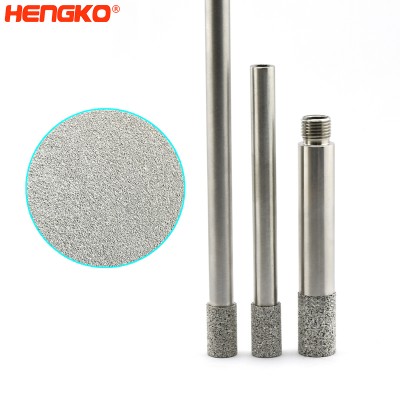
Medical Stainless Steel Filter W/ Humidifier Bottle Oxygen inhaler filter with Pressure...
sintered powder metal filters are ideal for applications involved in various industries including medical, food and beverage, aerospace, flame arrestors, wel...
View Detail -
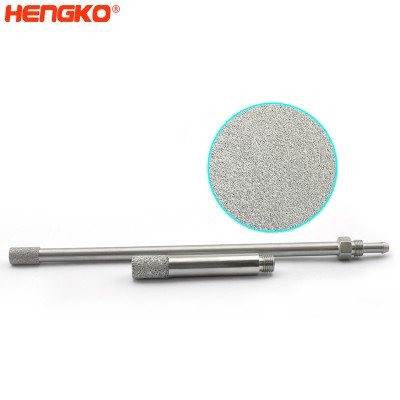
Multipurpose sintered stainless steel filter for Wall-type Medical Oxygen Humidifier &...
sintered powder metal filters are ideal for applications involved in various industries including medical, food and beverage, aerospace, flame arrestors, wel...
View Detail -

Micron Porous Stainless Steel filter for Oxygen Humidification Devices Medical with reg...
sintered powder metal filters are ideal for applications involved in various industries including medical, food and beverage, aerospace, flame arrestors, wel...
View Detail -
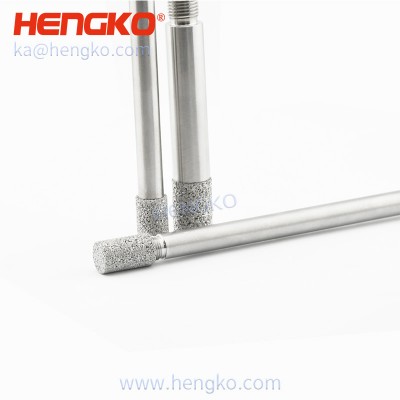
hospital wall mounted medical oxygen humidifier bottle flow meter replacement stainless...
sintered powder metal filters are ideal for applications involved in various industries including medical, food and beverage, aerospace, flame arrestors, wel...
View Detail -
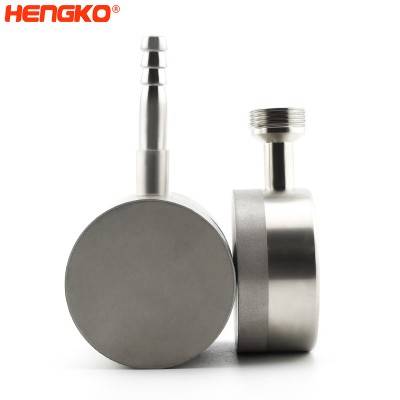
Stainless Steel 316 Carb Stone Brewing for Homebrew Carbonation – Yeast Oxygenation Kit
Sintered air stone diffusers are often used for porous gas injecting. They have different pore sizes(0.5um to 100um) allowing small bubbles to flow through i...
View Detail -

sintered sparger brewing carbonation wort aeration wands (Pure Oxygen) system for homeb...
HENGKO SS air stone is commonly used to aerate the wort before fermentation, which helps ensure a healthy start to the fermentation process. The HENGKO 2.0 m...
View Detail -
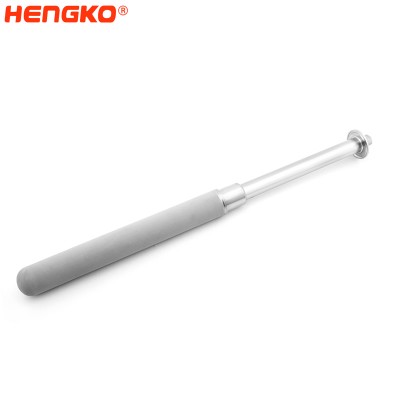
Oxygenation / Tri-Clamp Carbonation Stone Assembly
Carbonation stone is used in containers to inject and diffuser gases (such as carbon dioxide) into beer. It can be made of finely sintered stainless steel. U...
View Detail -
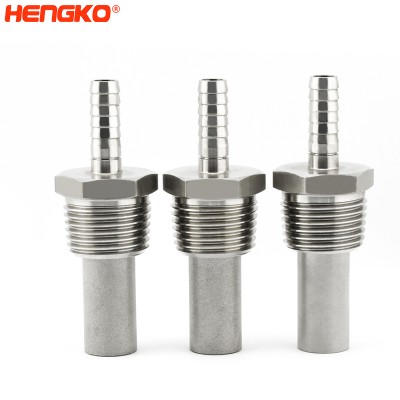
SFH01 inline oxygenation diffusion stone
This is a great option for putting oxygen into your wort as you transfer from the kettle or plate chiller into your fermentor. It comes with a 1/2" NPT and a...
View Detail -
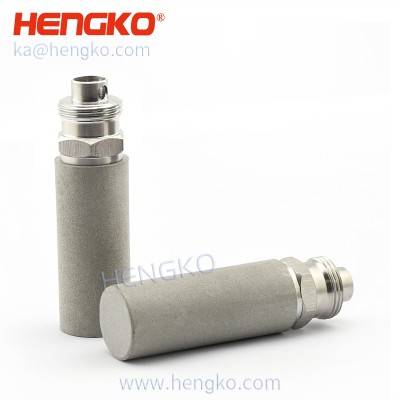
SFT01 SFT02 1/2″NPT X 1/4”bard inline 0.5um 2um carbonation oxygenation Diffusio...
Product Name Specification SFT01 D5/8''*H3'' 0.5um with Flare thread, M14*1.0 thread SFT02 D5/8''*H3'' 1um with Flare thread, M14*1...
View Detail -
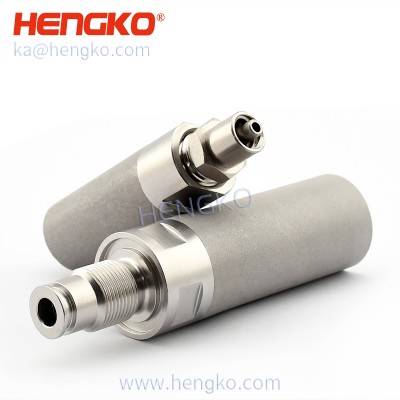
0.5, 2 Micron SFT01 SFT02 Homebrew Oxygenation Diffusion Stone Beer Carbonation Aeratio...
Product Name Specification SFT01 D5/8''*H3'' 0.5um with Flare thread, M14*1.0 thread SFT02 D5/8''*H3'' 1um with Flare thread, M14*1....
View Detail -
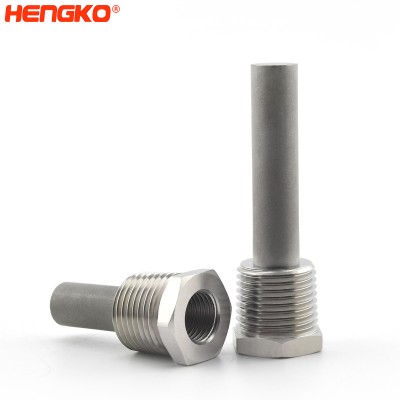
0.5, 2 Micron Oxygenation Stone Brewing Carbonation Aeration Diffusion Stone For DIY Ho...
HENGKO aeration stone is made of the food-grade best stainless steel material 316L, healthier, practical, durable, high temperature resistant, and anti-corr...
View Detail -

Stainless Diffusion Stone 0.5 2 Micron Oxygen Stone Fitting For Homebrew Wine Beer Tool...
Features: [Premium Quality] Constructed of food-grade material with 304 stainless steel 1/4″ barb to ensure durability, and no rust or leak. [Easy to Use] ...
View Detail -
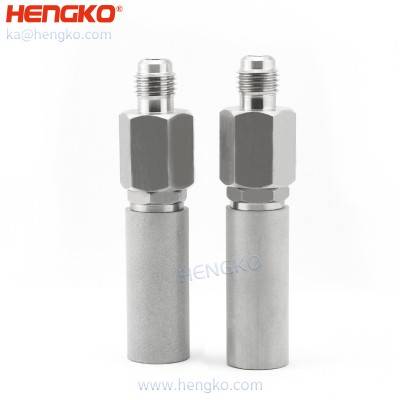
SFT11 SFT12 1/4”MFL wine tool micron diffusion professional oxygenation carbonati...
1. Better Than Shaking a Keg! 2. Are you tired of carbonating your beer the unpredictable way? You crank up the PSI in the keg, shake, and wait with ...
View Detail -
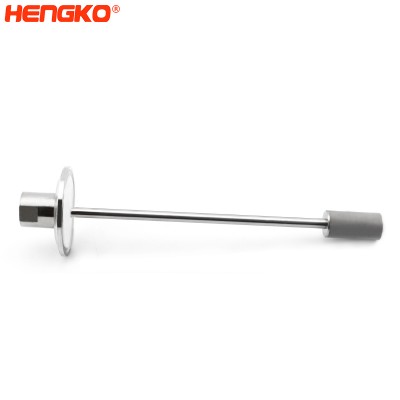
0.5 2 10 microns stainless steel home brewing wort beer pure oxygenation kit aeration w...
HENGKO carbonation stone is made of the food grade best stainless steel material 316L, healthier, practical, durable, high temperature resistant, and anti-c...
View Detail
Main Features of Oxygen Stone Brewing
The main features of Oxygen Stone Brewing are as follows:
1. Oxygen Dispersion:
Oxygen stones are designed to disperse oxygen into the liquid, providing efficient aeration and oxygenation of the brewing process.
This promotes yeast growth, fermentation, and enhances the overall flavor profile of the beer.
2. Porous Structure:
Oxygen stones have a porous structure that allows for controlled oxygen release. The small pores create tiny bubbles,
maximizing the surface area of oxygen contact with the liquid, ensuring thorough and even oxygen distribution.
3. Sanitary Design:
High-quality oxygen stones are made from materials that are easy to clean and sanitize, ensuring the prevention of
contamination and maintaining the hygiene standards necessary for brewing.
4. Compatibility:
Oxygen stones are compatible with various brewing systems, making them versatile and suitable for use in different setups,
such as homebrewing, craft breweries, and industrial-scale brewing.
5. Oxygenation Control:
Oxygen stones offer precise control over the amount of oxygen introduced into the liquid, allowing brewers to adjust
and fine-tune the oxygen levels according to the specific requirements of the brewing process.
6. Fast Oxygenation:
Oxygen stones enable rapid oxygenation, reducing the time needed for the oxygenation step during brewing,
which is crucial for achieving consistent and efficient fermentation.
7. Reduced Oxidation:
Oxygen stones provide a controlled and gentle oxygenation process, minimizing the risk of excessive oxidation that
could adversely affect the beer's quality and shelf life.
8. Efficiency and Cost-Effectiveness:
Oxygen stones are efficient in delivering oxygen, requiring minimal amounts to achieve desired results.
This cost-effective feature ensures optimal use of resources and minimizes waste.
9. Durability:
High-quality oxygen stones are made from durable materials, ensuring they withstand the rigors of brewing operations and have a long service life.
10. Easy Installation:
Oxygen stones are typically designed for easy installation and integration into the brewing system, simplifying the brewing process for brewers of all skill levels.
In conclusion, Oxygen Stone Brewing's main features revolve around efficient and controlled oxygen dispersion, compatibility with various brewing setups, sanitary design, and the ability to provide fast and precise oxygenation, leading to improved fermentation and the creation of high-quality beer.
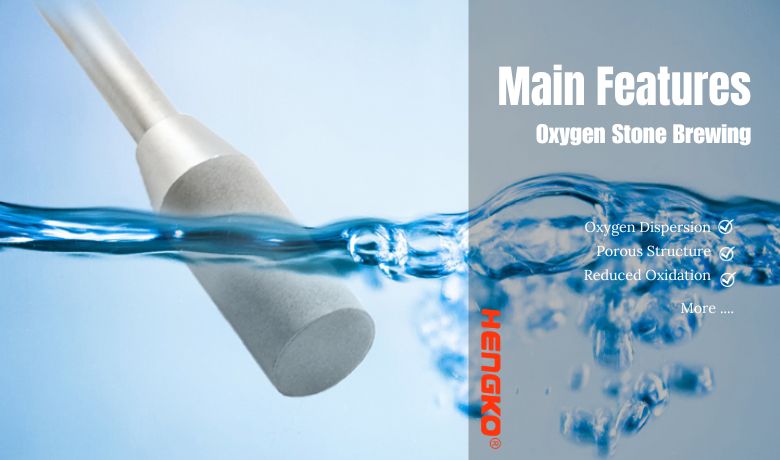
Types of Oxygen Stone Brewing
To Know kinds of types of Oxygen stone brewing, so you can find right Oxygen stone for your devices.
There are several types of oxygen stones used in the brewing industry to facilitate oxygenation and aeration during the brewing process. The main types include:
1. Porous Stainless Steel Stones:
These are the most common type of oxygen stones and are made from stainless steel with fine pores that allow for controlled oxygen dispersion.
our Oxygen Stone are durable, easy to clean, and suitable for various brewing applications.
2. Sintered Ceramic Stones:
Sintered ceramic stones are made by compressing ceramic particles into a porous structure.
They provide efficient and consistent oxygenation, offering an alternative to stainless steel stones.
3. Titanium Stones:
Titanium oxygen stones are becoming increasingly popular due to their resistance to corrosion and chemical reactions.
Titanium oxygen stone offer longevity and are well-suited for long-term use in professional brewing setups.
4. Glass Stones:
Glass oxygen stones have a unique appearance and are favored for their aesthetic appeal.
Glass oxygen stone's function similarly to other types of stones, providing effective oxygen dispersion during the brewing process.
5. Bar Stones:
Bar stones are specifically designed for bar-top dispensing systems and are used to oxygenate beers directly
as they are poured, enhancing the beer's flavor and aroma.
6. Inline Oxygenation Stones:
Inline oxygenation stones are integrated into the brewing process, often attached to
hoses or pipes, allowing for continuous oxygenation during wort transfer or fermentation.
7. Carbonation Stones:
While not exclusively for oxygenation, carbonation stones can also be used for oxygenation purposes during beer carbonation.
They are made from stainless steel or sintered materials and aid in achieving consistent carbonation levels in the final product.
8. Fine Bubble Diffusers:
These are not technically "stones," but they serve a similar purpose in generating tiny bubbles for efficient oxygen dispersion.
Fine bubble diffusers are commonly used in larger-scale brewing operations.
9. Disposable Oxygenation Capsules:
These small, one-time-use capsules contain oxygen and can be added directly to the wort or
beer to provide a controlled burst of oxygen for a specific application.
The choice of oxygen stone type depends on the specific requirements of the brewing process, the scale of brewing, and the desired level of oxygenation. Brewers often select the appropriate type based on factors such as durability, ease of cleaning, efficiency, and compatibility with their brewing system.
Why use Sintered Metal Oxygen Stone Brewing ? Advantage and Disadvantage
Using sintered metal oxygen stones in brewing offers several advantages and disadvantages. Let's explore them:
Advantages of Sintered Metal Oxygen Stone Brewing:
1. Efficient Oxygen Dispersion:
Sintered metal oxygen stones have a fine and uniform porous structure, allowing for efficient and controlled dispersion of oxygen into the liquid.
The small pores generate a vast number of tiny bubbles, maximizing the surface area of oxygen contact with the liquid, leading to effective oxygenation.
2. Durable and Long-lasting:
Sintered metal oxygen stones are typically made from stainless steel or other durable metals.
This makes them resistant to corrosion, chemical reactions, and physical wear, ensuring a long service life with proper care and maintenance.
3. High Temperature and Pressure Tolerance:
Sintered metal stones can withstand high temperatures and pressures, making them suitable for various stages of the brewing process,
including hot-side and cold-side oxygenation.
4. Consistency:
Sintered metal stones provide consistent and repeatable results, allowing brewers to achieve precise levels of oxygenation in
each batch of beer, leading to uniform fermentation and consistent beer quality.
5. Easy to Clean and Sanitize:
Cleaning and sanitizing sintered metal oxygen stones is relatively straightforward. The smooth metal surface and porous
structure can be effectively cleaned using standard brewing cleaning agents, ensuring sanitation and preventing contamination.
Disadvantages of Sintered Metal Oxygen Stone Brewing:
1. Limited Flexibility:
Sintered metal oxygen stones are typically available in fixed pore sizes and shapes. This limits the ability to adjust the oxygen flow rate, and different stones may be required for varying oxygenation needs.
2. Prone to Clogging:
Over time, sintered metal stones may accumulate debris or precipitates from the brewing process, potentially leading to clogging and reduced oxygen dispersion. Regular maintenance and cleaning are necessary to prevent this issue.
3. Higher Cost:
Compared to other types of oxygen stones, sintered metal stones can be more expensive due to the manufacturing process and the use of high-quality materials. However, their durability and efficiency can justify the initial investment in the long run.
4. Weight:
Sintered metal stones can be relatively heavy, especially in larger sizes, which may require additional support and careful handling during installation and use.
In conclusion, sintered metal oxygen stones are popular in brewing for their efficiency, durability, and ability to provide consistent oxygen dispersion. Despite their advantages, they may have limited flexibility, require regular cleaning, and can be relatively more expensive than other types of oxygen stones. Brewers should consider their specific brewing needs and budget when choosing the appropriate oxygen stone for their brewing process.
What factors you need to care when choose Oxygen Stone Brewing ?
When choosing an oxygen stone for brewing, several factors need careful consideration to ensure it meets
the specific needs of the brewing process. Here are the key factors to consider:
1. Oxygenation Efficiency:
The primary purpose of the oxygen stone is to efficiently disperse oxygen into the liquid.
Consider the oxygenation efficiency of the stone, which is determined by factors such as pore size, material,
and design, to ensure effective oxygenation during the brewing process.
2. Brewing Scale:
The size and capacity of your brewing setup play a crucial role in selecting the right oxygen stone.
Different brewing scales may require different types and sizes of stones to achieve optimal oxygen dispersion.
3. Material:
Oxygen stones are made from various materials, including stainless steel, ceramic, titanium,
and glass. Each material has its advantages and disadvantages in terms of durability, cost, and
chemical resistance. Choose a material that aligns with your brewing requirements and budget.
4. Compatibility:
Ensure that the oxygen stone is compatible with your brewing equipment and system. Consider factors
like thread size, fitting type, and installation requirements to ensure a seamless integration into your setup.
5. Cleaning and Sanitation:
Brewing equipment must be easy to clean and sanitize to prevent contamination. Opt for oxygen stones
with a design and material that allows for thorough and straightforward cleaning procedures.
6. Durability:
Choose a robust and durable oxygen stone that can withstand the rigors of brewing operations and
have a long service life. This will help you avoid frequent replacements and ensure consistent performance.
7. Cost:
Consider the cost of the oxygen stone, including the initial investment and any potential maintenance or
replacement costs. Balance the cost with the quality and features of the stone to make a cost-effective choice.
8. Control and Adjustment:
Some oxygen stones offer more control over the oxygen flow rate, allowing brewers to adjust the level
of oxygenation. Depending on your brewing process, this feature may be essential to achieve precise oxygen levels.
9. Reviews and Recommendations:
Look for reviews and recommendations from other brewers who have used the same oxygen stone.
Feedback from experienced brewers can provide valuable insights into the stone's performance and reliability.
10. Supplier Reputation:
Choose a reputable supplier like HENGKO with a track record of delivering high-quality oxygen stones and
excellent customer service.
A trusted supplier can provide reliable support and ensure a smooth purchasing experience.
By carefully considering these factors, brewers can select the most suitable oxygen stone for their brewing
process, leading to improved fermentation, consistent beer quality, and a successful brewing operation overall.
Stainless Steel vs Ceramic Stones Aeration Stone Brewing
Stainless steel and ceramic are both common materials used for aeration stones in brewing.
Each material has its own advantages and disadvantages.
1. Stainless steel is a durable and long-lasting material that is resistant to corrosion and wear.
It is also easy to clean and sanitize. Stainless steel aeration stones produce fine, even bubbles
that are ideal for carbonating beer. However, stainless steel aeration stones can be more expensive
than ceramic stones.
2. Ceramic is a porous material that is also durable and long-lasting.
It is less expensive than stainless steel, and it produces very fine bubbles that are ideal for oxygenating wort.
However, ceramic aeration stones can be more difficult to clean and sanitize than stainless steel stones.
They can also break if they are dropped or mishandled.
Ultimately, the best type of aeration stone for you will depend on your individual needs and preferences.
If you are looking for a durable, long-lasting stone that is easy to clean, then stainless steel is a good choice.
If you are on a budget or want the finest possible bubbles, then ceramic is a good option.
Here is a table summarizing the pros and cons of each material:
| Material | Pros | Cons |
|---|---|---|
| Stainless steel |
Durable, long-lasting, resistant to corrosion and wear, easy to clean and sanitize, produces fine, even bubbles |
More expensive than ceramic |
| Ceramic |
Less expensive than stainless steel, produces very fine bubbles |
More difficult to clean and sanitize, can break if dropped or mishandled |
Interested in enhancing your brewing process with top-notch Oxygen Stone Brewing solutions?
Contact HENGKO today at ka@hengko.com to discuss your specific requirements and explore the wide range of
high-quality oxygen stones and brewing accessories they offer. Elevate your brewing experience with HENGKO's
professional expertise and personalized services. Email us now and let's brew excellence together!
